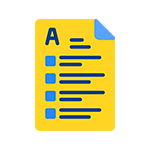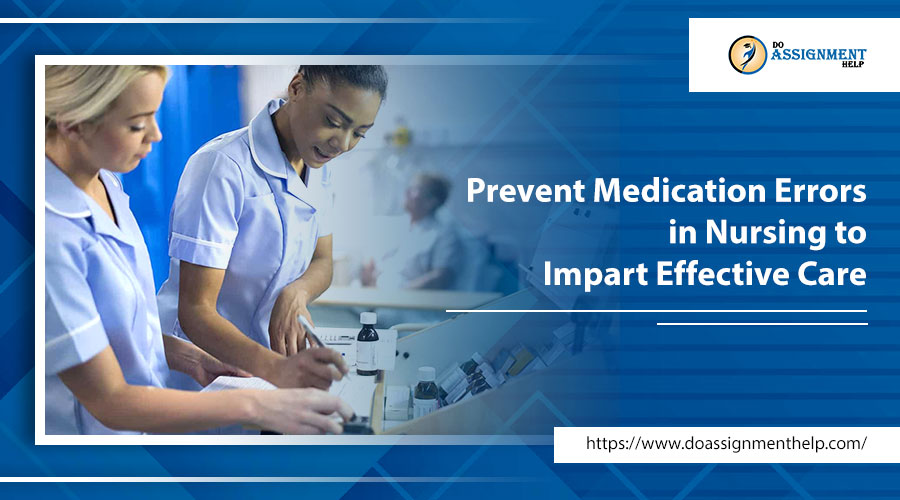The National Institutes of Health reports that in the United States, nearly 9,000 people die every year because of medication errors in nursing. These errors can happen at any point during the medication process, and the medical staff has to prevent them.
Medication mistakes not only result in high monetary expenses but also cause immense psychological and physical pain in patients. As a result, nurses must take steps to minimize these risks.
In this article, you will uncover valuable tips about preventing medication errors in nursing.
Table of Contents
Proven Ways to Minimize Medication Errors in Nursing
We can minimize Medication errors by understanding their causes and sources and implementing practical techniques.
1. Learn the main causes of medication errors
Medication errors can negatively impact the condition of a patient. The risk of these errors increases because nurses usually handle several patients simultaneously. That’s why it is crucial to double-check and keep documenting what you have administered and to whom.
Here are 5 significant reasons behind medication errors.
- Confusion over drugs that look or sound alike.
- Administration of the wrong strength of the medication.
- Mistakes in prescribing drugs hamper the patient’s safety.
- Wrongly calculating medications. Miscalculations can also occur while giving drugs intravenously.
- Understand the sources of medication errors.
There are various sources of medication errors. Being aware of them is necessary to prevent them.
- Poor handwriting – Illegible handwriting is difficult for nurses to comprehend. They often make mistakes in understanding the prescription.
- Unclear zeros or decimal points – Sometimes, the dosage is written unclearly. For example, the decimal points aren’t in the right place. So, nurses can administer a significantly high amount of drugs than needed to the patient.
- Inability to record prescription details – If the prescriber cannot document all details of the prescription, nurses find it difficult to understand it. For example, the prescriber may not record the form of the dosage, time, or how to administer it.
2. Become technologically aware to minimize risks related to medications.
Even the most experienced nurses can make fatal medical errors if they are not technologically aware. A few years ago, in 2016, a nurse in Seattle calculated dosages in her head and administered a dose that was 10 times higher to an infant. This led to infant mortality.
Today, technology is an integral part of modern healthcare. Nurses must use these advancements to make patient care error-free.
Some technologies you must learn about include the following:
- Electronic prescribing systems ensure the correct dispensing of medications.
- Smart infusion pumps with alarms that go off when the doses are beyond the usual limits.
- Automated dispensing systems to simplify managing medications.
- Adhere to the five rights of medication.
Every nurse must follow the five rights of medication administration for safe medication practices. These include:
- The right patient means giving drugs to the patient they are intended for.
- The right drug, which means the medicine is given, as per the doctor’s recommendation.
- Thirdly, the right dose entails checking the dosage amount at least three times before giving it to the patient.
- Fourth, the right route implies the form in which nurses should give medication. Pills can be crushed, given whole, or through an NG tube.
- The right time indicates that medications should be administered at the correct time, be it morning, afternoon, or evening. If the patient needs them at regular intervals, it is essential to record them.
3. Double-check every patient’s procedure.
This is an effective way to avoid medication errors. You usually have another nurse review all medication orders. Her job is to ensure that the patient’s medication is documented and transcribed correctly on the administrative record.
Double-checking patient procedures can reduce instances like what occurred in the Minnesota Nursing Home in 2015. Here, a nurse transcribed a patient’s medication order onto another person’s chart. Even her fellow nurse failed to notice. Both nurses weren’t aware of the errors for nine days. The patient who was a victim of this error took the medication, an anti-coagulant because their body developed blood clots. During the nine days of taking this medication, the patient developed blood clots in the brain. The outcome was a fatal stroke, causing their deaths.
So, double-checking the medication orders of every patient is crucial. It is more so when it comes to high-alert medications. The nurse who is administering these medications should double-check them herself.
4. Store medications properly
Proper storage of medications is imperative to maintain their efficacy. If drugs like vaccines are kept outside the refrigerator (when they should be refrigerated), it won’t serve their purpose. Some medications need to be at room temperature. So, medical professionals like nurses should ensure they are in the appropriate place.
Biologics should always be refrigerated, and multi-dose vials should have clear labels. This prevents their administration after the expiration date.
5. Abide by medication reconciliation procedures.
One of the evidence-based strategies to reduce medication errors is comparing a patient’s medication order to their actual drugs. Numerous studies have shown that this intervention has a positive effect on preventing medication mistakes.
It is more so in acute care settings, where prescriptions can change between admission and discharge of medications. Nurses must follow all the medication reconciliation procedures. In the event of any differences, they must refer to the prescribing provider. When a patient gets discharged, nurses must give them a list of their existing medications. Further, they must explain the timing and amount of their administration.
6. Make an effective reporting method
Developing an efficient multiple-phase reporting method helps reduce medication errors. It also helps providers identify the baseline rates of mistakes. It is very helpful in reducing medication errors in nursing practice.
A successful strategy, according to the National Library of Medicine (NCBI) involves three stages:
- Pre-intervention phase – It reinforces voluntary mistake reporting in the hospital by the medical professional. During this phase, it is crucial to monitor medication handling, review the patient record, and document the procedures.
- Intervention or corrective phase – This stage has training programs for the targeted professional. The training programs must be to identify the errors, causation, consequence, and significance of communication for patient safety.
- Post-intervention phase – This phase embraces consistent monitoring and focuses on recollecting data. So, it should then be compared with the pre-intervention data. This phase evaluates how much the staff has adhered to report instances of medication errors voluntarily.
7. Place interventions to lower distractions.
Distractions during drug administration can impact patient safety. For example, put a quiet zone or the Do not Disturb sign in the medication preparation and administration areas.
In the 1980s, another strategy to decrease distractions, the sterile cockpitrule was put in place to avoid errors. The airline industry implemented this strategy, in which non-essential conversations or activities during the flight’s critical phase were prevented. It resulted in a significant (48.72%) drop in medication errors.
8. The nurse should update their pharmacologic knowledge.
Nurses should keep themselves abreast of the latest pharmacologic knowledge and new drugs. Through pharmacologic education, they learn about using new medications safely. As a result, nurses become familiar with suitable dosages, administration, drug interactions, and reactions.
Key Takeaways
There are various preventive strategies to reduce errors in nursing. Some major ways to get rid of common mistakes include the following:
- Ask for clarification if you are doubtful about a specific medication order.
- Harness technologies to dispense and administer the right amount of medication.
- Follow the six medication rights to prevent medical errors.
- Keep monitoring patients and document your findings.
- Report adverse events to your seniors immediately.
- Check the dosages of high-alert medications twice or thrice.
- Read the packaging and labeling of drugs carefully.
Summing up
Medical errors lead to avoidable patient deaths in the hospital. So, it is essential for every healthcare professional, be it nurses, physicians, or pharmacists, to follow safe medication practices. These evidence-based approaches will certainly help you address this widespread problem. If you want to learn about these approaches in more detail about medication errors in nursing, contact nursing assignment help.
 Santa Clara, CA 95050
Santa Clara, CA 95050 





